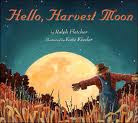When teaching conventions to students, there are several questions to keep in mind:
1. Did you use proper spacing? Spacing is important in order to differentiate between sentences.
2. Could another person read my writing? Is it clear?
3. Are spelling errors fixed? Did you use a dictionary or a thesaurus?
4. Did you use capital letters appropriately?
5. Did you use punctuation marks correctly?
P
 unctuation Takes a Vacation by Robin Pulver.Holiday House, 2004.
unctuation Takes a Vacation by Robin Pulver.Holiday House, 2004.
"On the hottest day Mr. Wright's class has ever seen, the teacher gives punctuation a vacation! Insulted, the punctuation marks take off, and a few days later postcards arrive from Take-a-Break Lake."
Minilesson:
- Review punctuation with your students.
- Read the story.
- Brainstorm a list of sentences and ask the students to fill-in the correct punctuation marks.
Ohio Academic Content Standards
Writing Conventions: Punctuation and Capitalization
5. Place punctuation marks at the end of sentences.
Another phenomenal book to read about conventions is from the same author:
 Nouns and Verbs Have a Field Day by Robin Pulver. Holiday House, 2007.
Nouns and Verbs Have a Field Day by Robin Pulver. Holiday House, 2007.
"The nouns and verbs decide to have some fun of their own while the kids in Mr. Wright's class are away participating in a field day. The nouns pair up with other nouns and the verbs with other verbs, until they realize they must cooperate to accomplish anything."
Minilesson:
- Review nouns and verbs with your students.
- Read story.
- After reading the story, look at cards (noun cards and verb cards). Put sentences together using the cards. Read sentences. Does the sentences sound correct?
- Have each student write sentences using the cards.
Ohio Academic Content Standards:
Writing Conventions: Handwriting
2. Leave spaces between words when writing.












